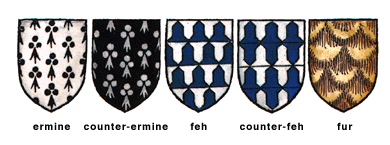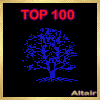Coat of arms |
Updated: 02/10/2010 |
||||||||
| In the following we are presenting the results of our research. In the angular brackets [ ] you will find the number of the source listed at the end oft the page. Surely for experts nothing new, but for beginners like we are perhaps interesting. We are grateful for suggestions and hints. |
This page: |
||||||||
Historical OriginSince beginning the 12th century, it was usual
in western and central Europe to position a coat of arms sign
as a distinguishing feature during fight or during tournaments
of the knights equipped uniformly [2]. |
|||||||||
Design of Coat of ArmsA coat of arms consists of shield, helmet,
helmet deck, helmet bulge or helmet crown and crest. 
 The coat of arms organization is exactly according
to heraldic rules determined. One rule says that the coat of
arms must be identifiable to a specific distance (200 feet) unambiguously.
That is the reason why there are only a limited number of coat
of arms colors, the tinctures there are: red, blue, black, green
and rarely purple [3]. 
Coat of arms colors tinctures [4] As well as metal colors: gold and silver [3].  The heraldic furs are compared the color. The feh (calabar, commercial denotation for the fur from that top face monochrome grey and under side white skins of the North-East European and arctic sub-kinds of the squirrel) appears in white and blue color as cloud or feather feh. The fur is represented in natural color [2].  Coat of arms fur [4] Helmet: The
form of the helmet depends on the century and the state of the
helmet carrier: The first helmet form was the above flat pot
helmet (12th century), him would follow in the 13th/14th century
the pot-helmet. The coat hanger helmet became later from nobility
and of middle class that end favoured tilting helmet [3]. |
 |
||||||||
Sources:
|
Who wants a coat of arms designed by professionals can contact e.g. Pro Heraldica | ||||||||